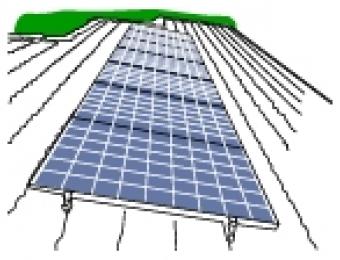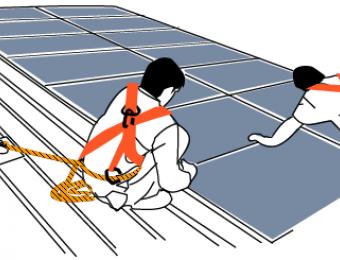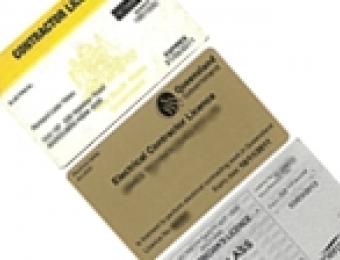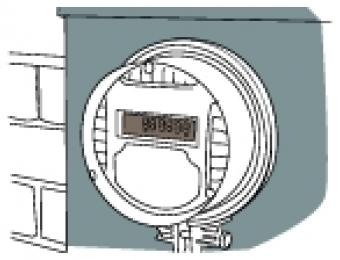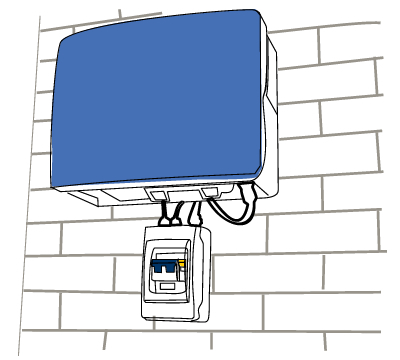
What are DC to AC inverters?
A DC to AC inverter (normally just called an 'inverter') takes the direct current (DC) power generated by a solar panel or wind turbine array and converts it to alternating current (AC) power, which can be used around the home or fed back into the grid to offset electricity consumption.
What types of inverters are available?
Inverters have two main variation points: whether or not they have a transformer, and the type of sine wave they produce (pure or modified).
Transformer or no transformer?
A transformer is the part which bumps up the voltage to 240V, which is required by all of your appliances, and which is the voltage at which power is supplied from the grid. If your inverter doesn't have a transformer, you'll need an external one.
Most inverters sold in Australia include transformers, although inverters without transformers are becoming increasingly popular for a few reasons. Inverters with transformers are generally bigger and heavier, and are normally slightly less efficient than the more modern transformerless types that are appearing on the market. They can also make a fairly loud humming noise, which can be irritating if the inverter's installed near a living area.
Pure sine wave vs. modified sine wave
The difference between a pure sine wave inverter and one which produces a modified sine wave is the shape of the wave for the output current. A 'pure' sine wave is a smooth wave, whereas a modified sine wave is closer to a square wave (see image).
A pure sine wave inverter will identically mimic the wave produced by the mains power grid, which will result in a much more efficient energy conversion - a little like the difference between looking at an extremely high resolution picture and an extremely low one.
How do inverters work?
The power that comes from your powerpoints is supplied in AC form, which means that the current alternates back and forth in a wave. The reason for this is that AC current is considered to be slightly less likely to kill you if you happen to get an electric shock from the mains. All of household appliances are designed to be used with an AC current, and this is where an inverter comes in.
In simple terms, the DC electricity produced by a solar or turbine array has no wave to it; it's a basic, direct flow of current. For it to be usable, it needs to mimic the wave form of the AC power coming in from the grid (a sine wave). The inverter uses either transistors or an oscillator to switch the voltage back and forth. In Australia the supply current switches at 50Hz, so the current is switched 50 times a second.
Inverters use a sample of the power supplied by the grid to ensure that the output is exactly in phase with the power supplied from the grid. The better quality the inverter, the more closely it will mimic the wave and the more efficiently it will regulate power. Lesser quality inverters mimic the sine wave in steps rather than straight lines (i.e. with a modified sine wave, as mentioned earlier) which can be fine for appliances which don’t use a lot of power, but can be problematic for more heavy duty appliances, especially for anything motorised.
How they're installed
The inverter will need to be installed under cover - usually in a garage or carport - although it can be installed in the house if there's no other safe place to put it. The inverter will need to be connected up to both the array and either the mains power or a battery storage system. If you're connecting to the mains like most people, you will need a licensed electrician to do the job. Even if you’re only connecting your inverter to a battery, it's a good idea to get a licensed installer or electrician in to make sure everything's the way it should be. Since most solar kits will be installed for you, this isn't likely to be too big a problem.
What to look for in a n inverter
There are a few things you should look for when choosing an inverter:
- Compliance with Australian standards. Grid connected inverters sold in Australia need to be tested and compliant with Australian Standard AS 4777. They must show a Certificate of Suitability number and a date of testing which is no more than 5 years old.
- Capacity. Your inverter should at a minimum be able to cope with the maximum power output of your array. If you plan on increasing the size of your array, a more capable inverter might be worth considering.
- Efficiency. The closer the inverter can mimic a pure sine wave, the more power you will get from it.
- Warranty. Look for a minimum of 5 years. Most good manufacturers will offer longer.
